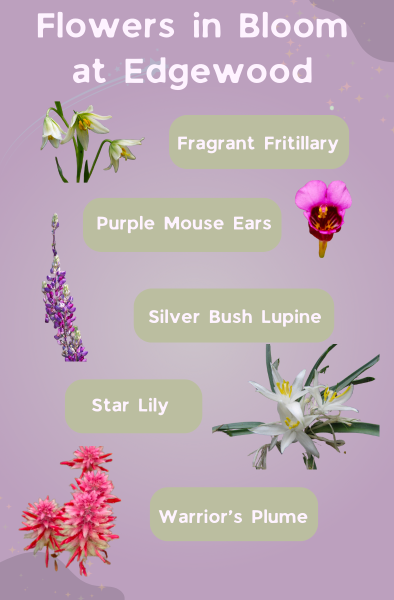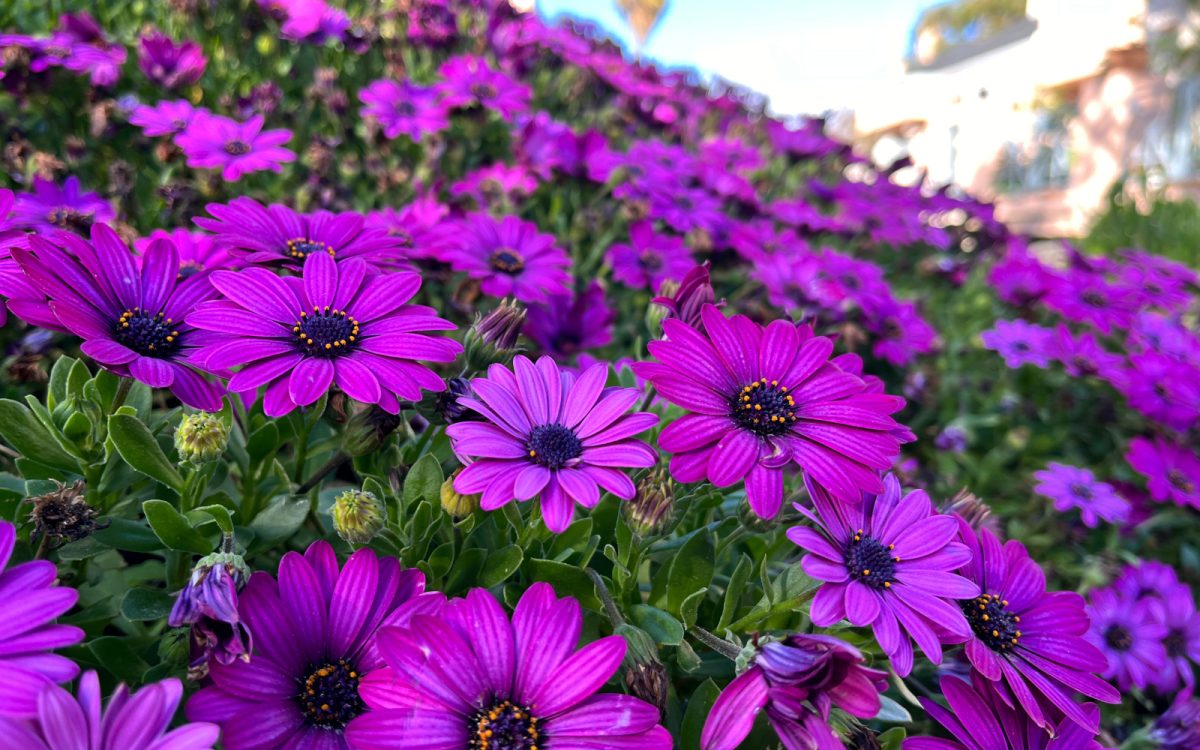California superblooms, characterized by vibrant wildflowers on hillsides and valleys, showcase nature shaped by climate patterns, affecting both nature and home gardens.
The unique blend of rainfall, temperature variations, and other environmental factors converge to create the perfect conditions for these spectacular bursts of flora in the springtime.
A “California superbloom” is not a scientific term. The media has used “superbloom” to describe a vast wildflower germination event that covers large swaths of land at the synchronously same point in time, according to Radhika Thekkath, co-president of the Santa Clara Valley Chapter of the California Native Plant Society.
“California has a unique geography and climate because of it, which is oriented from the North to the South, and the biodiversity in California is extremely high,” Thekkath said.
According to the California Department of Fish and Wildlife, California is home to more species of plants and animals than any other state in the nation, making it the most biodiverse state.
“The plants here adapted not just with great biodiversity but also to being fire-adaptive and drought-adaptive,” Thekkath said.
Remember the superbloom that happened last year? All those flowers dropped their seeds as well, so they contributed a lot of seeds to the seed bank. — Radhika Thekkath
“Superblooms need the right combinations of factors, such as deep winter weather to bloom and adapt, a heavy rainfall season, and seed banks ready to bloom,” Thekkath said. “As a result, the seed banks that build up in our hillsides are very large, and when there is heavy rain in the winter along with the right temperatures, then these billions of seeds can sometimes all germinate together causing these superbloom events.”
Despite having a superbloom last year and having dormant seeds grow into flowers the previous year, there still is a superbloom this year, according to Thekkath.
“Remember the superbloom that happened last year? All those flowers dropped their seeds as well, so they contributed a lot of seeds to the seed bank,” Thekkath said.
“Edgewood’s early blooming plants are doing exceptionally well,” said Barrie Moore, the vice president of Friends of Edgewood, a volunteer nonprofit organization that supports Edgewood Park and Nature Preserve in Redwood City.
 “However, since ‘superbloom’ isn’t a scientific term, different species of flowers are blooming especially well this spring,” Moore said.
“However, since ‘superbloom’ isn’t a scientific term, different species of flowers are blooming especially well this spring,” Moore said.
“We get some years that get more flowers than others, but because of the biodiversity at Edgewood, we have lots of different species of flowers. So each species could have a good year or a bad year, and those species bloom at all different times,” Moore said.
According to Moore, a species going through a “good” year at Edgewood would be the fragrant fritillary, among others as well.
“We have one rare plant; it’s called the fragrant fritillary. Our experts have been watching wildflower blooms for decades, and they say this is the best year they’ve ever seen the fragrant fritillary,” Moore said.
“Over 160,000 people visited Edgewood last year, and destroying the natural habitat restricts another superbloom from happening,” Moore said.
“When people step off the trail, they may inadvertently kill flowers and whole ecosystems,” Thekkath said. “Let’s cherish them for the beauty they bring to all of us and let it flourish for the next generations.”
Besides Edgewood experiencing the superbloom, residents are also impacted by the weather changes. Local resident Leila Gray has lived in the Bay Area for over 40 years.
“I planted all these African daisies, and this year, they are growing more and more. They are crawling, and they are fast,” Gray said.
Gray has also noticed more California poppies growing on the roads.
“I have so many fuchsias. I’ve never had this many before,” Gray said.












